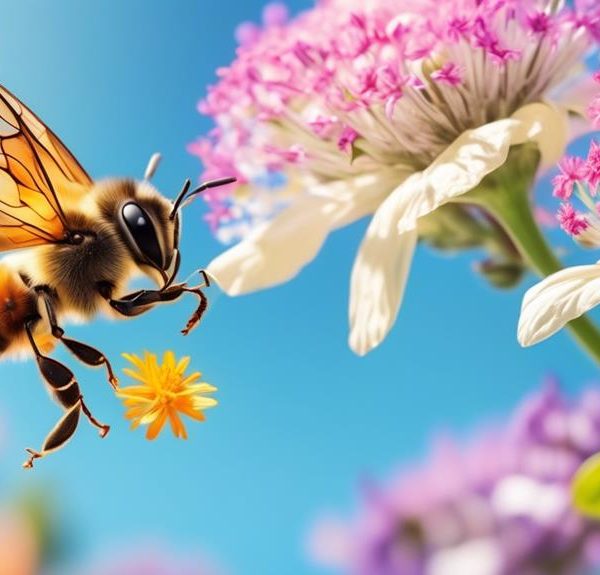Discover effective, non-harmful ways to deter bees from revisiting your garden, ensuring a peaceful, worry-free outdoor experience.
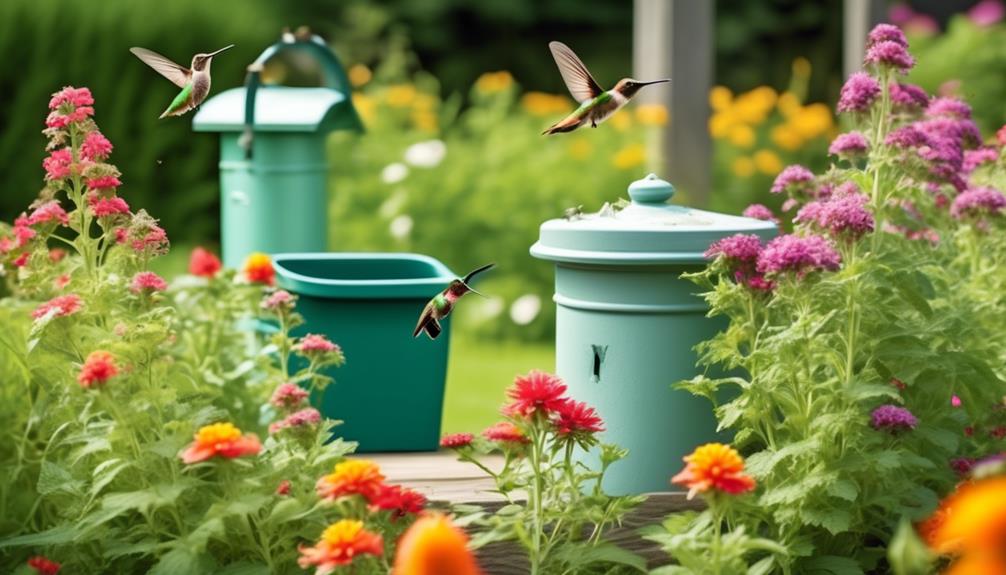
How to Stop Bees From Coming Back?
You love your garden, you love enjoying a sunny afternoon out on your patio, but you don't love the constant buzz and potential sting of bees that seem to have made your backyard their permanent home. Bees, while crucial to our ecosystem, can pose a problem when they decide to settle too close to human habitation, especially if there are allergy concerns.
You've probably tried a myriad of solutions to keep these buzzing visitors away, yet they persist in returning. In this discussion, we will explore a variety of proven methods to dissuade bees from making a comeback, ensuring your outdoor spaces can be enjoyed worry-free.
Stay with us to discover how you can maintain a bee-free zone without causing harm to these important pollinators.
Key Takeaways
- Remove food residue promptly and properly manage waste to avoid attracting bees.
- Replace flowering plants that attract bees with less appealing alternatives.
- Seal cracks and holes in walls, roofs, and windows to prevent bees from entering.
- Set up water sources away from your home to discourage bees from coming back.
Understanding Bee Attraction Factors
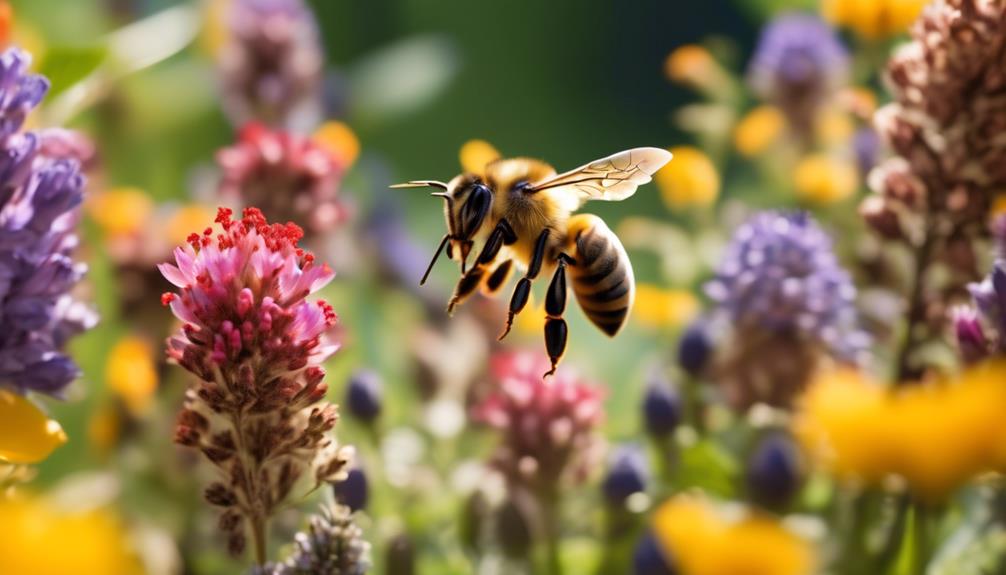
Before diving into measures to deter bees, it's crucial to understand what exactly attracts them in the first place. Bees are essentially drawn to three things: food, water, and shelter. Flowers, with their sweet nectar and vivid colors, are a primary food source for bees. You'll often find bees buzzing around your garden if you've a variety of blossoming plants.
Furthermore, bees need water for survival. They're attracted to water sources like birdbaths, pet water bowls, or even leaky outdoor faucets. If you've noticed bees hovering around certain areas of your yard, it might be due to a nearby water source.
Lastly, shelter plays a significant role in bee attraction. Bees build nests in quiet, undisturbed places like empty animal burrows, hollow trees, or the eaves and attics of buildings. If your property offers such spaces, it's likely to attract bees.
Understanding these factors is the first step in bee deterrence. Once you're aware of what lures bees, you can manipulate these factors to your advantage, making your property less appealing to these pollinators.
Safeguarding Your Outdoor Spaces
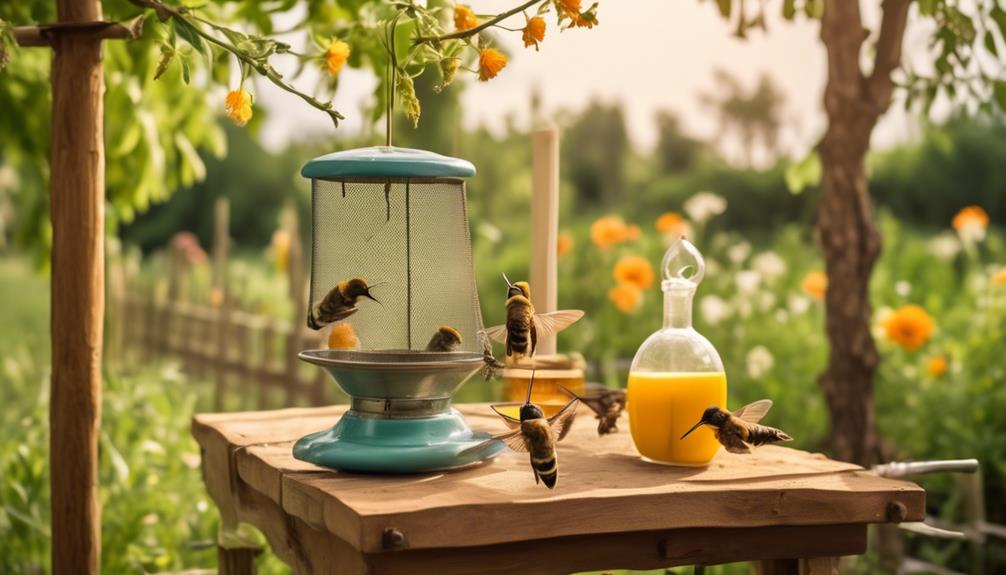
Armed with the knowledge of what draws bees, you can now effectively strategize how to safeguard your outdoor spaces, making them less attractive to these vital pollinators. The first step is reducing floral scents, as bees are attracted to strong, sweet smells. Opt for unscented plants or those with a mild fragrance. Bees are also drawn to bright colors, especially yellow and blue, so choose plants with less vibrant hues.
Proper waste management is crucial. Bees, particularly yellow jackets, are attracted to protein and sweet food scraps. Ensure trash cans are tightly sealed and remove any food residue promptly.
Water sources are another bee magnet. If you've got birdbaths or pet water dishes outdoors, it's best to move them indoors or keep them empty when not in use.
Lastly, consider professional bee-proofing. Experts can identify and seal potential nesting sites, such as holes in the ground or cracks in walls.
Natural Bee Repellents to Consider

Often, you can effectively deter bees using natural repellents, which are environmentally friendly and pose less risk to these important insects. Essential oils are a great starting point. Citronella, peppermint, and tea tree oil are particularly effective. Simply mix these oils with water in a spray bottle and apply in areas where bees frequent.
Another plant-based repellent is cucumber. Bees dislike the acidic property of cucumber peels, so scattering these in your garden can help deter them. Similarly, garlic's strong smell can also repel bees. A spray made from crushed garlic and water can be a potent deterrent.
Mothballs are another option to consider. They contain naphthalene, a chemical bees dislike. However, they're toxic to pets and children, so be cautious where you place them.
Professional Bee Removal Services

While natural repellents can be effective, there are instances where a more direct approach is necessary, and that's where professional bee removal services come in. These experts employ techniques grounded in entomology and ecological principles, ensuring the safety of both humans and bees.
If you're dealing with a large, aggressive hive or allergic to bee stings, professional removal is your best bet. Trained specialists use protective gear and special tools to safely extract the bees. They focus on preserving the bees' life as they play a crucial role in the environment, particularly in pollination.
Moreover, these professionals don't just remove the bees; they're also equipped to handle hive and honeycomb removal, which are essential in preventing re-infestation. Bees can smell left-behind honeycombs and may return to rebuild their colony. Thus, the service includes thorough cleaning and application of natural deterrents to the area.
It's also worth noting that local regulations may require the involvement of licensed professionals for bee removal, particularly for protected species. Remember, while DIY methods may seem cost-effective, the risk and potential damage can far outweigh the initial costs of hiring a professional.
Regular Maintenance and Inspection Tips
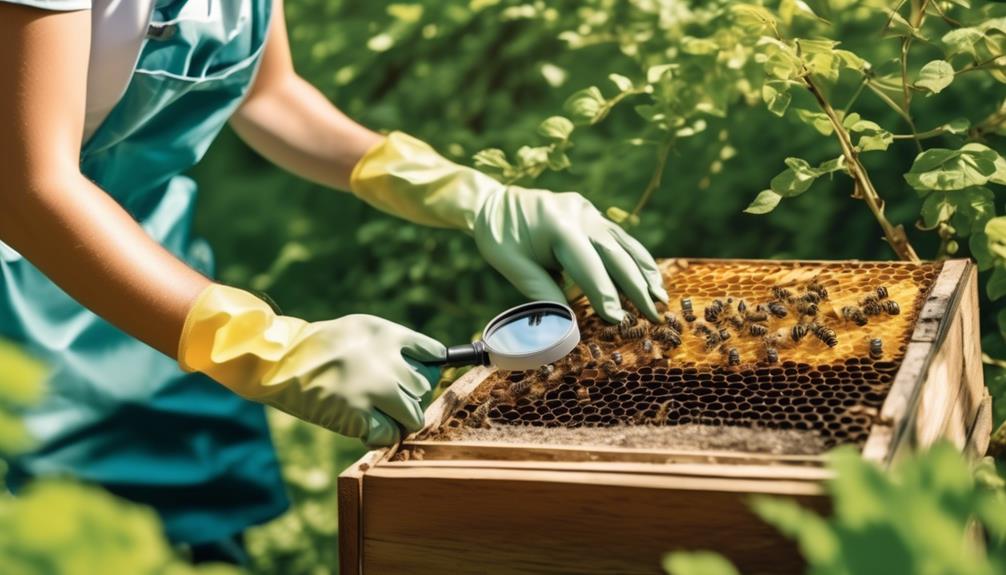
To keep bees from returning, it's crucial that you establish a routine of regular property inspections and maintenance. Begin by examining your property for potential nesting sites. Bees typically build their nests in sheltered areas like tree hollows, under eaves, or in wall cavities. You should seal any cracks or holes in walls, roofs, and around windows to prevent bees from entering and establishing a colony.
Regularly check your garden for flowering plants that might attract bees. Certain species, such as clover, sunflowers, and lavender, are particularly appealing to bees. You might consider replacing them with less attractive alternatives.
Maintaining a clean environment is also essential. Regularly clean up fallen fruit and secure garbage bins, as these can attract bees searching for food. You can also set up water sources away from your home, as bees need water and might be attracted to your property if it's the only available source.
Lastly, consider professional pest control services for regular inspections. They've the expertise to identify early signs of infestation and can provide effective solutions. Remember, prevention is always better than dealing with a full-blown infestation.
Frequently Asked Questions
What Are the Consequences if a Bee Stings You?
When a bee stings you, it releases venom that can cause immediate pain, redness, and swelling. You might also experience itching and warmth around the sting site. Some people have severe allergic reactions, which can include difficulty breathing, dizziness, swelling of the face, throat, or mouth, and a rapid pulse. If you experience these symptoms, you should seek immediate medical attention.
Most people, however, only have local reactions to bee stings which subside within a few hours.
What Happens if I Kill a Bee, Will It Attract More Bees?
When you kill a bee, it releases a pheromone that alerts other bees to danger. This can indeed attract more bees to the area. It's their way of calling for backup.
So, it's not the best strategy if you're trying to reduce the number of bees around. Instead, consider safer, more eco-friendly methods to deter them.
How Can I Safely Remove a Bee From My House Without Killing It?
You can safely remove a bee from your home without killing it by using a glass and a piece of cardboard.
Carefully place the glass over the bee, then slowly slide the cardboard underneath, trapping the bee.
Make sure it's secure, then gently carry the glass and cardboard outside.
Release the bee in a suitable spot away from your home.
It's a simple, non-lethal way to handle a bee situation.
Are There Any Specific Plants or Flowers That Attract Bees More Than Others?
Yes, there are certain plants and flowers that bees find more attractive than others. Bees are particularly drawn to bright, fragrant flowers with a good supply of nectar and pollen. Some of these include lavender, sunflowers, and rosemary.
They're also attracted to native plants, so the exact types may vary depending on your location. Remember, if you're trying to deter bees, it's best to avoid planting these in your garden.
Can Bees Cause Structural Damage to My Home?
Yes, bees can cause structural damage to your home. If a colony settles in your walls, they'll build honeycombs that can stain and damage drywall, insulation, and siding.
They're not typically burrowers like termites, but their presence can lead to other issues, like attracting predators that do burrow.
It's advisable to consult a professional if you suspect a bee infestation to prevent extensive damage.
Conclusion
In conclusion, you're now equipped to prevent bees from making a comeback. Understanding what attracts bees and securing your outdoor spaces are crucial first steps.
Natural repellents and professional services provide additional support if needed. Never underestimate the power of regular maintenance and inspections.
Remember, it's about creating a balance, not eradicating these vital pollinators. With knowledge and vigilance, you can keep your spaces bee-free while still respecting their role in our ecosystem.

